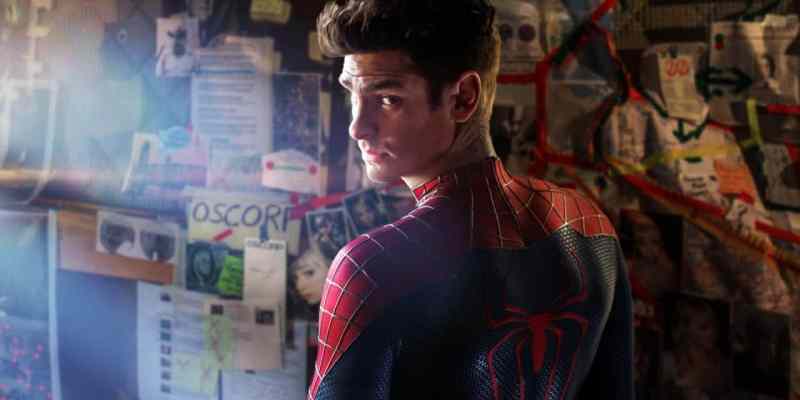This op-ed about the greatness of Andrew Garfield Spider-Man contains spoilers for Spider-Man: No Way Home.
With Spider-Man: No Way Home, Andrew Garfield has cemented himself as the Spider-Man.
With each elder Spider-Man giving Tom Holland’s MCU (Marvel Cinematic Universe) Spider-Man advice on how to deal with grief and be the best Spider-Man he can be, there is an impressive twinge of sorrow in Garfield’s performance — considerably more than that of the other two Spider-Men.
Hampering this though is how the MCU and Sony clearly feel about Garfield and his particular universe, from the portrayal and writing of his villains to how he views himself when sizing himself up against the other two Spider-Men.
You Can Talk?
It all begins not with Andrew Garfield Spider-Man, but his rogues. The Lizard and Electro are treated with the least respect in the narrative as a whole. Electro is given some wishy-washy reason why he looks completely different now compared to his debut in The Amazing Spider-Man 2. Compounding that, he has no kind of character journey throughout this film, and he simply feels like a video game boss (and that is an insult to video game boss fights, which are visually engaging, while his fight in the film is CGI noise).
Meanwhile, the Lizard has devolved both visually and as a character. He now has just the one shtick — turning everyone into lizards — which was only ever one storyline in the character’s fictional history.

Add to that a lazy repurposing of archive footage when the Lizard is returned to his human form, and the “Amazing Universe” that Andrew Garfield Spider-Man hails from is underserved — thematically as well as narratively — by both Sony and Marvel, which seem to have no real clue what to do with its villains.
What Have You Got for Me Today, New York?
When Garfield’s Peter Parker enters, he shows off that boyish charm that won over so many audience members back in 2012. With his cheeky back-and-forth between him, MJ, and Ned, he re-establishes himself in our hearts quickly. Even when the film’s script lays it on a bit too thick with the sharing of war stories between the Spider-Men, he sells his personal grief far better than the other two.
There is also the strange heroism check between the three Spider-Men in the third act that deals with each of the Spider-Men and their foes. The film goes out of its way to point out how Garfield has the least interesting universe.
While Holland and Tobey Maguire are talking about their extraterrestrial encounters, Garfield laments that his strangest foe is a Russian in a mechanical rhino suit, which is bizarre since Electro is a living lightning god — and the most powerful villain in the film.

I think it comes down to director Mark Webb understanding the true depth of grief Peter Parker went through in The Amazing Spider-Man 2 and working with Garfield to bring out incredible complexity from his Peter across his films. This Peter has been betrayed by several key individuals in his life. By his father, his mentor, and his best friend, throughout the course of his short tenure he’s been knocked down again and again. This culminates with the crashing crescendo that is Gwen Stacy’s death. Even then though, he dusts himself off and becomes the Amazing Spider-Man.
This Peter has always been the outsider and behaved likewise as Spider-Man, which has always made him more compelling and relatable to me. For instance, when a young child is stuck in a car about to plummet into the river below, Peter doesn’t try to cheer him on as Spider-Man; he removes his mask for a more intimate approach. He shows the child he can become Spider-Man and that he can be the hero of the day.
This theme is pushed further in The Amazing Spider-Man 2 when he saves another boy from bullies and walks him home. This boy returns at the climax of the film donning his own webbed mask to save the day. This shows the incredible inspiration Andrew Garfield Spider-Man has.

No Way Home director Jon Watts understands these themes to a degree — best seen when Andrew Garfield Spider-Man stops history from repeating by saving Holland’s MJ from falling to her death. When they land and she’s safe, Garfield is visibly trembling. He speaks briefly, but his face says it all.
I have complicated emotions regarding this scene. On one hand, I love how fittingly poetic this beat is. Garfield finally gets to have that moment, to almost absolve himself of that critical failure. Unfortunately, it is piggybacking off a far more emotionally gripping scene from a film that dealt with the personal ramifications of Peter Parker’s superhero identity far better. Thankfully, Garfield sells it once again, showcasing that his Peter was the definitive Peter all along.
When an outsider like Andrew Garfield Spider-Man enters a universe like the MCU, he shines because he doesn’t necessarily play by the established rules. He brings his own signature scars to the MCU, and these scars give him a personality and a sense of depth that neither Holland nor Maguire’s Spider-Men ever achieved.
